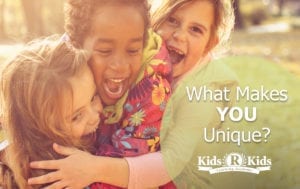In the month of November, we celebrate diversity. In a world where we see bullying and stigmatization for being different, each of us can take steps to create a world where all people are accepted.

So, how do we teach our children to do the same? During early education and development, a child doesn’t notice differences in others. It’s not until about three years of age that a child sees that his skin may be a different color than his friend. Around four years of age, children become curious about different hair styles and clothing. At about five years of age, a child may begin to notice the different types of food each of us eat.
When a child is curious about someone or something, it’s okay to let them ask questions. Let your child hear an explanation to these questions so they can begin to understand why someone is different from them.
If we tell our children it’s not polite to stare or ask questions about a person’s differences, they may never learn about the wonderful world outside of their home or classroom. Without knowledge of people’s differences, a child begins to create his own understanding of the world and may even decide that he cannot be friends with someone who is different from him.
Everyone is unique and every person has something that makes them extraordinary.
Below are some open-ended questions to talk with your child about people and their differences.
- Ask your child what he likes most about himself, and how can this special something be used to be a good friend to his peers.
- Ask him, what is unique about his friends in his classroom or neighborhood? And, what does he like most of about these differences?
- Ask him, why is it nice to have friends who are different?
- Ask him, what does he think it would be like if all his friends looked and acted just like him?
When we talk to our children about diversity from a young age, we are encouraging them to be accepting of others, as well as themselves. We are all unique- and we should celebrate that!